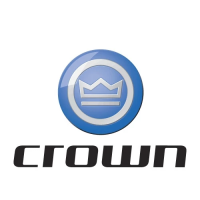349
M8.0-1055-003
01 Rev. 6/08
CYLINDERS
Cylinders
Mast Cylinder Inspection
(Refer to Figure 15293)
1. Before disconnecting battery and initial cylinder re-
pair, a careful inspection should be made of the
cylinder assembly throughout a complete lift and
lower sequence.
2. Check ram (12) for any signs of nicks, scratches,
surface imperfections, etc. that allow abnormal
leakage, improper cylinder operation, or create
seal damage.
3. Check wiper ring (14) and complete cap area for
component wear and/or leakage that is abnormal.
As the cylinder assembly is repaired be aware of com-
ponent part condition and not only replace a worn or
damaged part, but correct or replace a part that may be
causing other premature wear.
Mast Cylinder Disassembly
1. Turn the cap counterclockwise and unscrew it from
the cylinder tube. Refer to Figure 15962.
2. Remove the cap and carefully extract the ram as-
sembly from the cylinder bore, never allowing the
ram to come in contact with any sharp edges.
Mast Cylinder Repair
Avoid high pressure fluids - escaping fluids under pres-
sure can penetrate the skin, causing serious injury. Re-
lieve pressure before disconnecting hydraulic lines.
Tighten all connections before applying pressure.
Keep hands and body away from pin holes which eject
fluids under high pressure. Use a piece of cardboard or
paper to search for leaks. Do not use your hand.
Any fluid injected into the skin under high pressure
should be considered a serious medical emergency
despite an initial normal appearance of the skin. There
is a delayed onset of pain, and serious tissue damage
may occur. Medical attention should be sought imme-
diately from a specialist who has experience with this
type of injury.
When an excessive amount of hydraulic oil is evident
on the top of the cylinder where the ram exits from the
cap, the rod packing is probably bad and should be re-
placed. The replacement of the packing can be accom-
plished without removing the ram assembly from the
cylinder tube or truck.
1. Make sure all hydraulic pressure has been re-
moved from the mast cylinders.
2. Carefully remove hydraulic fittings from lift cylinder
rams. Attempt to absorb any hydraulic oil draining
from lines during this procedure.
3. Remove cylinder cap by turning it in a counter-
clockwise direction.
Seals used in the cylinders are made of an extremely
durable, hard polyurethane material which can be de-
formed temporarily to allow for installation without per-
manent damage.
Figure 15962
1 Cylinder Tube
2Cap
3O-Ring
4 Bleed Screw
Crown 2007 PF15682-3 Rev. 6/08

